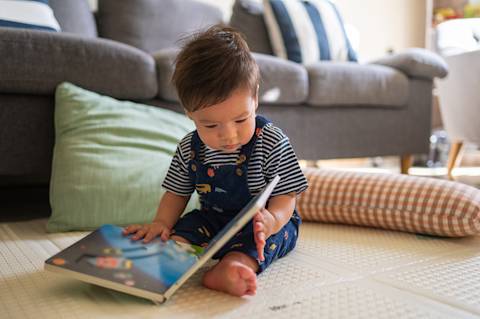Every caregiver faces stressful moments when raising children. It’s part of the job description! Practicing deep breathing, sometimes called belly breathing, is a science-backed way to calm your body in difficult situations.

Deep breathing is the practice of taking deep inhales through the nose, filling the lungs and belly with oxygen, and exhaling all the air out of the mouth. You might also see deep breathing called diaphragmatic breathing, abdominal breathing, belly breathing, and paced respiration. The goal is to fill the lungs and belly with more air than we get with the shorter breaths we tend to take throughout the day.
When your body is stressed, your heart rate and blood pressure increase. Muscles tend to tense up and tighten. Deep breathing increases the amount of oxygen in your body, which can slow your heart rate down, decrease your blood pressure, and unclench your muscles. This sends signals to the brain that it’s safe to relax. Focusing on your breathing also shifts your attention from whatever is causing the stressful moment, which can also help your mind and body become calmer.
Yes, children benefit from deep breathing just like adults do! This is a great tool to give your child to help them keep calm when they’re starting to feel big emotions. Teaching them calming strategies like belly breathing can also help them bounce back from difficult moments or disappointments. This ability to understand and control their own emotions, also called self-regulation, is a great skill that will continue to benefit them as they grow.
In a sitting, standing, or lying down position, place one hand on your chest and the other on your stomach. Breathe in through your nose, and fill your belly with air. The hand on your chest shouldn’t move. Once you’ve completely filled your belly with air, slowly breathe all of the air out through your nose. Repeat these long, slow breaths until you feel calmer. Experts recommend adding in 10–20 minutes of deep breathing once each day. Even taking five minutes to focus on your breath can have great benefits. And the more your child sees you practicing your belly breaths, the more they’ll want to imitate what you’re doing.
If you’d like to start teaching your child deep breathing, experts have a few recommendations. First, start teaching your child about belly breathing when they’re already calm. This will make it easier for them to pay attention to what you’re saying and concentrate on their breathing. Second, explain belly breathing in terms they understand. Experts recommend creating a mental image that can help them practice the technique. For example, they can imagine they’re a big, scaly dragon breathing in all the air around them. Then, just like the dragon, they breathe out all their dragon fire in a huge exhale. Learn more about Dragon Breathing.








